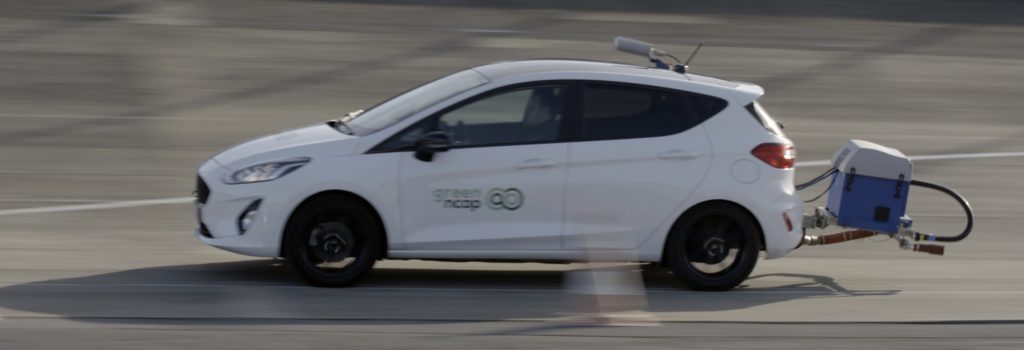In the standard test phase, in addition to the tests carried out in the laboratory, Green NCAP also conducts a real-world driving test, during which tailpipe emissions are collected and sampled. The basis of this test is the Real Driving Emissions (RDE) assessment, introduced into legislation in 2018 to try to control and reduce the gap between emissions values measured in the lab and those emitted in the real world. Green NCAP expands the RDE to make it more challenging and to test under more realistic traffic situations. Green NCAP’s vision is that an engine shall be clean and energy efficient in every operation point under the torque curve. Examples of these enhanced boundary conditions of the PEMS+ cold test compared to the regulatory RDE test are 0 – 1300 m altitude vs 0 – 700 m or an ambient temperature between -7 to 40°C instead of 0 to 30 °C. The test is performed with active cabin climatization, radio and headlights.

Green NCAP expands the current legislative Real Driving Emissions assessment to make it more realistic.
The drive is split into three parts, representing urban, rural and motorway driving, and exhaust gases are analysed at the tailpipe by a Portable Emissions Measurement System (PEMS), attached to the back of the car. The pollutant emissions measured are NOx, CO and PN.
The PEMS+ testing consists of a variety of real-world scenarios from fuel saving eco-friendly driving to more dynamic, heavy load driving. The on-road test conducted in the standard test phase is:
- PEMS+ Cold (normal real world driving with cold engine start)
In post-processing, the vehicle’s behaviours in the first 8 kilometres of the PEMS+ cold test is extracted and evaluated as a strong evidence for robustness performance:
- Short Urban Trip (PEMS+ cold first 8 km with cold engine start)
The following on-road tests cover the additional robustness test check:
- PEMS+ Eco (fuel saving eco-friendly real world driving with warm engine start)
- PEMS+ Heavy (Dynamic heavy load sporty real-world driving with warm engine start)
- PEMS+ Congestion simulation (15 min idling, 5 min stop and go to simulate heavy congestion)
Plug-in hybrid electric vehicles (PHEVs) perform PEMS+ Cold in two different modes – charge-sustaining mode (CS, i.e. when running mainly using the combustion engine) and charge-depleting mode (CD, i.e. when the test starts with a fully charged battery). With PHEVs, PEMS+ Eco and PEMS+ Heavy are conducted only in charge-depleting mode (CD). Plug-in hybrids are subject to PEMS+ Congestion simulation only in CS mode.




































































































































